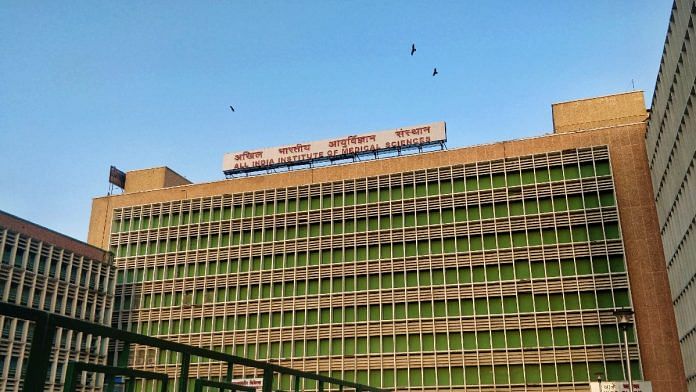The panel discussion held at AIIMS, Delhi, on 14 May, also included Dr Rima Dada, assistant professor in the department of anatomy at AIIMS, Delhi, and Dr Deepak Agarwal, professor of neurosurgery at AIIMS, Delhi.
Dr Chawla revealed that the technique was used for the first time in the country last week to treat two children with retinoblastoma. “We don’t have the results yet,” she added, explaining that assessing the children’s response to the treatment would take at least one to two months. However, she expressed hope, especially for cases where conventional chemotherapy fails, and enucleation—surgical removal of one eye—has already occurred.
“In such situations, when only one eye remains and parents are desperate to preserve their child’s vision, Gamma Knife offers a ray of hope,” Dr Chawla said.
She emphasised that for resistant tumours—cancers that do not respond to treatment, either initially or after an initial response—this advanced technique might be the last chance to save both vision and the eye.
Dr Chawla explained that after Gamma Knife treatment, children must return for follow-up examinations conducted under general anesthesia. “We need to evaluate how the tumour has responded and decide the next course of action,” she said. While in the other treatments, according to her, follow-up procedures are not conducted so often, in this case, the tumour needs to be checked continuously to see whether or not it is responding.
“If it grows, we must act quickly. Surgery may be needed,” she said, noting that this is standard protocol for any globe-saving or eye-preserving therapy.
Dr Deepak Agarwal elaborated on the logistical and clinical challenges of adapting Gamma Knife radiosurgery for very young patients. “Retinoblastoma cases typically involve children of very young age, and they need to be made unconscious even for an MRI,” he said.
The imaging process, he explained, requires specialised equipment, including the MRI machine and all other associated devices, which must be compatible with the Gamma Knife system. He said that AIIMS had to temporarily cancel its regular OT schedules to accommodate pediatric cases. “We were just piloting the idea to see if it’s even possible. And we were successful. We managed to treat two children,” Dr Agarwal said.
While AIIMS has treated more than 1,000 patients with Gamma Knife radiosurgery for various brain tumours and cancers, its application in retinoblastoma has only just begun.
“This marks a significant step forward,” Dr Agarwal noted. “And if the results are positive, it could become a game-changer for children with resistant eye tumours.”
AIIMS Delhi receives 350 to 400 cases of retinoblastoma every year, a number that has remained steady over the past decade, according to Dr Chawla.
Stressing the importance of awareness, Dr Rima Dada said if a family has a history of retinoblastoma, it is crucial to get genetic testing done, even at birth. “If a child shows signs like a white reflex or glow in the eye, parents should consult a doctor immediately.”
Since retinoblastoma is a genomic disease, she added, detecting a germline mutation changes the entire course of management, requiring more frequent screenings, evaluations under anesthesia, and long-term follow-up.
According to a , ‘Retinoblastoma outcomes: Global perspectives’, published in March 2022 in the open-access medical journal , among countries, India has the highest number of retinoblastoma cases—almost 2,000 per year, most of which occur in children under the age of five. This is nearly 50 percent more than China and six times higher than the United States.
No other hospital in India has used Gamma Knife surgery to treat retinoblastoma so far. Only medical centres in Russia have been using Gamma Knife radiosurgery to treat retinoblastoma, particularly in cases resistant to conventional therapies, doctors at AIIMS said.
Dr Anil Solanki, associate consultant, ophthalmology, Sir Ganga Ram Hospital, welcomed the AIIMS initiative, noting that while retinoblastoma is rare, if the results are positive, Gamma Knife could be a game-changer. “Currently, in chemo-resistant cases, we use radiation—typically brachytherapy, where a radioactive implant is placed on the eye and later removed,” he told ThePrint. He added that in case of larger tumours or non-responsive cases, external beam radiation (ERBT) is used. However, he said that it has been “unfocused” and caused side effects such as cataracts and facial atrophy.
“Gamma Knife, being highly focused, may avoid these issues. If it proves effective and safe, it could significantly improve treatment,” he said.
Dr Uma Mallaiah, senior consultant, ophthalmology, Indraprastha Apollo Hospital, added that although retinoblastoma is the most common eye cancer in children under the age of five, it remains rare overall and is typically diagnosed before the age of five.
“Gamma Knife is a focused radiation option used when other treatments fail. It can help control the tumour and preserve the eye, with fewer side effects,” she told ThePrint, adding that while complications like bleeding, cataracts or nerve damage can occur, it remains a safe and reasonable option in challenging, treatment-resistant cases.
(Edited by Sugita Katyal)








